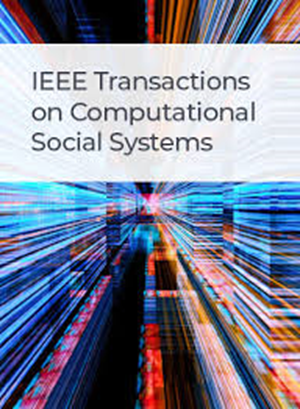利用深度强化学习增强社交网络中的群体影响力最大化
IF 4.5
2区 计算机科学
Q1 COMPUTER SCIENCE, CYBERNETICS
IEEE Transactions on Computational Social Systems
Pub Date : 2024-10-04
DOI:10.1109/TCSS.2024.3459853
引用次数: 0
摘要
在当代社会,群体在决定决策和行动方面起着举足轻重的作用。大多数成员对特定主题的共识往往会引导群体的集体决策。群体影响力最大化(GIM)旨在选择网络中的 $k$ 种子用户,使最终激活的群体数量最大化。如果一个群组中有 $/beta$ 的用户被激活,那么这个群组就被称为被激活群组。本研究深入探讨在社交网络中策略性地选择种子用户,以最大限度地传播话题,从而激活最多的群组。在计算来自选定节点集的影响力传播时,GIM 问题本身具有 NP 难度,传统上在确保理论稳健性、时间效率以及在大型复杂网络环境中的适应性方面一直面临障碍。为了克服这些挑战,我们引入了一个名为 GIMDRL 的稳健框架,利用深度强化学习(DRL)解决社交网络中的 GIM 问题。我们的方法整合了多个图神经网络的节点嵌入,从而利用各种信息进行有效的网络分析。这种整合在优化参数学习过程中起着至关重要的作用。我们在真实世界和合成数据集上进行了广泛的实验,以评估我们提出的框架的性能。实验结果表明,我们的方法明显优于 GIM 中的现有方法,即使是在采样图上进行训练时也是如此。这凸显了我们的模型在不同网络场景下的强大泛化能力。本文章由计算机程序翻译,如有差异,请以英文原文为准。
Enhanced Group Influence Maximization in Social Networks Using Deep Reinforcement Learning
In contemporary society, groups are pivotal in shaping decisions and actions. The consensus of a majority of members on specific topics often guides the collective decision-making in groups. Group influence maximization (GIM) aims to select $k$ $\beta$
求助全文
通过发布文献求助,成功后即可免费获取论文全文。
去求助
来源期刊

IEEE Transactions on Computational Social Systems
Social Sciences-Social Sciences (miscellaneous)
CiteScore
10.00
自引率
20.00%
发文量
316
期刊介绍:
IEEE Transactions on Computational Social Systems focuses on such topics as modeling, simulation, analysis and understanding of social systems from the quantitative and/or computational perspective. "Systems" include man-man, man-machine and machine-machine organizations and adversarial situations as well as social media structures and their dynamics. More specifically, the proposed transactions publishes articles on modeling the dynamics of social systems, methodologies for incorporating and representing socio-cultural and behavioral aspects in computational modeling, analysis of social system behavior and structure, and paradigms for social systems modeling and simulation. The journal also features articles on social network dynamics, social intelligence and cognition, social systems design and architectures, socio-cultural modeling and representation, and computational behavior modeling, and their applications.
 求助内容:
求助内容: 应助结果提醒方式:
应助结果提醒方式:


